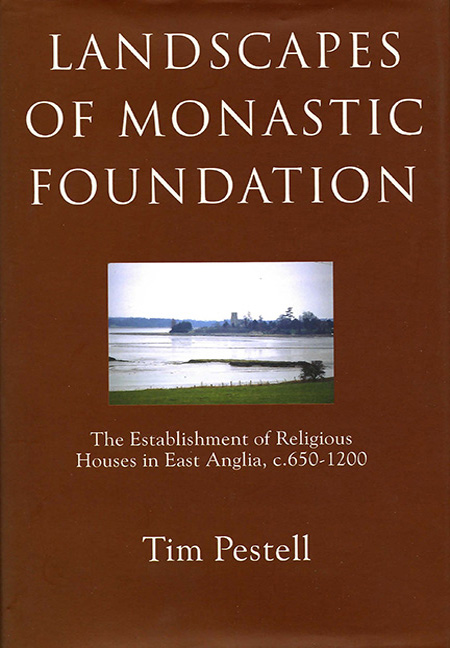Book contents
- Frontmatter
- Contents
- List of illustrations
- Acknowledgements
- Abbreviations
- 1 Introduction: Past and Present Approaches to Monastic Studies
- 2 Monasticism in Middle Anglo-Saxon East Anglia
- 3 The First Viking Age and its Consequences for Monasticism in East Anglia
- 4 Monastic Reform and Religious Life in the Later Anglo-Saxon Period
- 5 The Establishment of Monasteries in the Norman Landscape
- 6 Conclusions
- Bibliography
- Index
5 - The Establishment of Monasteries in the Norman Landscape
Published online by Cambridge University Press: 11 May 2017
- Frontmatter
- Contents
- List of illustrations
- Acknowledgements
- Abbreviations
- 1 Introduction: Past and Present Approaches to Monastic Studies
- 2 Monasticism in Middle Anglo-Saxon East Anglia
- 3 The First Viking Age and its Consequences for Monasticism in East Anglia
- 4 Monastic Reform and Religious Life in the Later Anglo-Saxon Period
- 5 The Establishment of Monasteries in the Norman Landscape
- 6 Conclusions
- Bibliography
- Index
Summary
If events in 1066 brought about a dramatic change in English political realities, the fallout was no less profound for communal religious life. The arrival of a Norman nobility saw the emergence of new political geographies and with it, the patronage of different forms of ordered religious communities. Monastic studies have frequently focused upon this post-Conquest period rather than its Anglo-Saxon precursor, both historically and archaeologically, primarily (one suspects) because of the substantially better array of evidence. This is both unfortunate and frustrating. It has led to monastic studies typically concentrating on individual religious orders, reforming movements, or house histories: the latter have often focused on economic or landholding issues guided by surviving house cartularies and account rolls. Only rarely have these topics been integrated within regional studies. As a result, little attention is usually paid to tenurial patterns prevailing at the Conquest as a basis for understanding the subsequent evolution of monastic institutions. This is a surprising omission because frequently it can be shown that the establishment of new monasteries was structured or guided by a social landscape of estate ownership, power relations and belief inherited from the Anglo-Saxon period. This same landscape also requires re-examining for the ways in which topography and material culture inform us about attitudes to, and the construction of, monastic identities in the eleventh and twelfth centuries.
THE RANGE OF THE SAMPLE
The documented foundation of so many monastic houses after 1066 gives a phenomenal potential array of data to be examined. ‘Mainstream’ monasticism diversified as reforming movements reinterpreted the monastic rule. Not only did various orders mutate out of the Benedictines, notably the Cluniacs, Carthusians, Savigniacs and Cistercians; older clerical communities became ‘regularised’ using the Augustinian Rule. This Rule was also adapted by new Orders such as the Premonstratensians, Gilbertines and Canons of the Holy Sepulchre. Military orders like the Knights Templar and Hospitallers appeared, while caritative work was undertaken by a network of hospitals and leper houses. Numerous works have already charted these changes, and today there are no religious orders without at least some form of institutional history.
- Type
- Chapter
- Information
- Landscapes of Monastic FoundationThe Establishment of Religious Houses in East Anglia, c.650–1200, pp. 152 - 217Publisher: Boydell & BrewerPrint publication year: 2004

